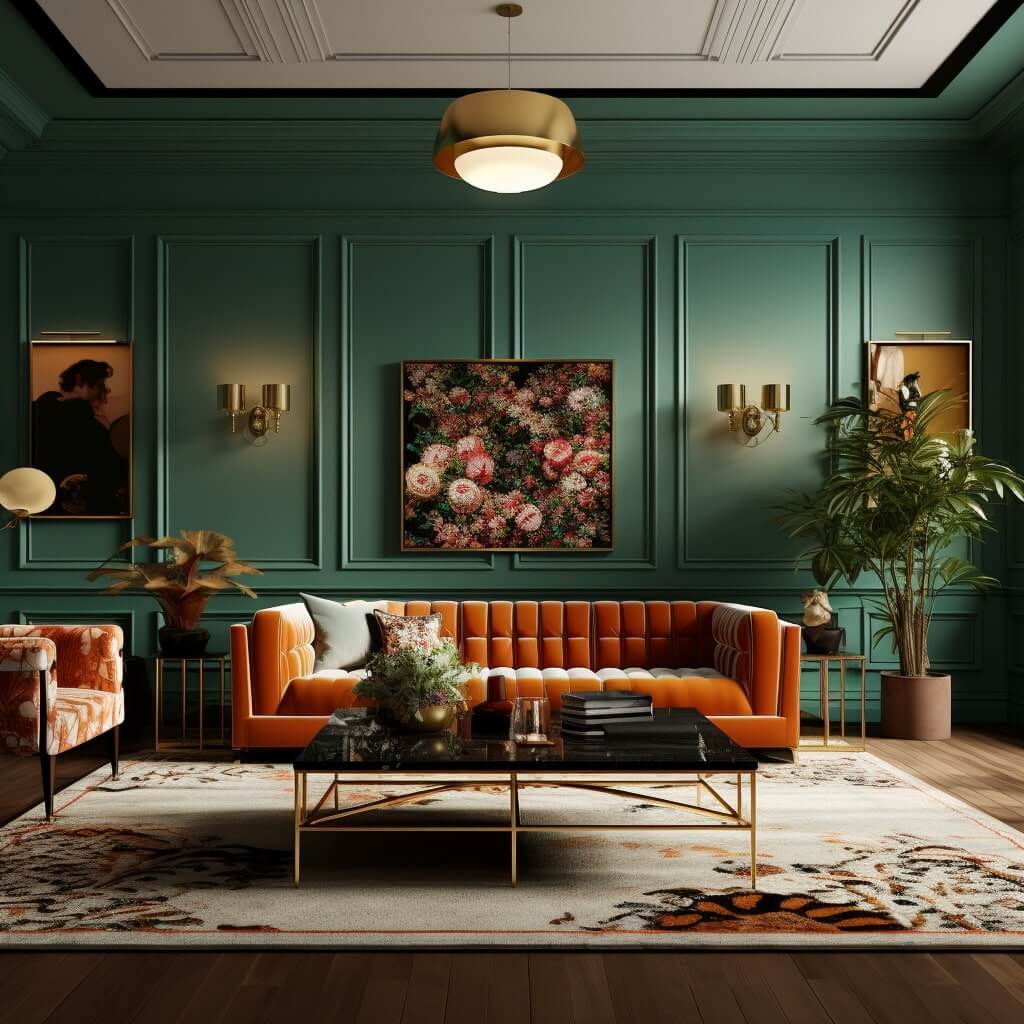Understanding Opposition in Interior Design
Interior design is not just about creating a beautiful space; it’s about evoking emotions and making statements. One of the most powerful concepts in achieving this is opposition. Whether it’s through color, texture, or form, opposition plays a crucial role in creating dynamic and engaging environments.
The Role of Contrast in Design
Contrast is the backbone of opposition in interior design. It highlights differences and creates visual interest, ensuring that your space doesn’t become monotonous.
Types of Contrast
- Color Contrast: Utilizing complementary colors to create a vibrant atmosphere.
- Texture Contrast: Combining smooth and rough surfaces to add depth.
- Shape Contrast: Mixing geometric and organic shapes for added complexity.
Color Contrast Examples
| Color Pair | Effect |
|---|---|
| Blue & Orange | Creates an energetic and lively atmosphere. |
| Black & White | Timeless elegance and classic appeal. |
Benefits of Using Opposition in Interior Design
Incorporating opposition can transform an uninspired room into a vibrant space. Here are some benefits of embracing this principle:
- Enhanced Visual Appeal: Opposing elements can create a more alluring environment.
- Improved Functionality: Strategic opposition can delineate different areas, improving flow.
- Increased Emotional Impact: Contrast can evoke feelings and set the mood of a room.
Personal Experience: Transforming My Living Room
When I first moved into my apartment, my living room felt bland. The beige walls blended with the dark brown furniture, creating a mundane environment. Realizing the power of opposition, I decided to rework the space.
By adding bright throw pillows, a vibrant rug, and contrasting artwork, I was able to create an inviting atmosphere that feels alive. The stark contrast between the plush textures of the rug and the sleek furniture changed the entire vibe of the room.
Practical Tips for Incorporating Opposition
1. Choose a Focal Point
Identify a key feature in your space, like a fireplace or a piece of art, and build your design around it. Use contrasting colors or textures to make your focal point stand out.
2. Layer Textures
Mix different materials, like wood, metal, and fabrics, to create depth. A sleek metal lamp beside a soft knitted blanket can add layers of interest to your design.
3. Balance Your Color Palette
Choose a base color and introduce contrasting shades that complement it. This balance creates a harmonious effect while emphasizing the opposition.
Styles That Embrace Opposition
Many interior design styles utilize opposition to create visual interest. Here are a few notable examples:
- Modern: Clean lines juxtaposed with bold, colorful accents.
- Bohemian: A mix of patterns and textures that clash yet complement.
- Industrial: The rawness of metal and concrete against soft textiles.

Pros and Cons of Using Opposition in Interior Design
Advantages
- Creates a dynamic and engaging environment.
- Allows for personal expression and creativity.
- Can make spaces appear larger or more intimate based on contrast usage.
Disadvantages
- If overdone, it can lead to visual chaos.
- Finding the right balance may be challenging for some.
- May not suit all personal styles or preferences.

Frequently Asked Questions about Opposition in Interior Design
What is the principle of opposition in interior design?
Opposition is the use of contrasting elements like color, texture, and shape to create visual interest and dynamism in a space.
How can I effectively use opposition in my home?
Start by identifying contrasting colors and textures that resonate with your style and experiment with different combinations.

Can opposition in design be overwhelming?
Yes, if not balanced, it can create a chaotic look. It’s essential to maintain some cohesion in your designs while incorporating contrast.
Conclusion: Make Opposition Work for You
Embracing opposition in your interior design journey can lead to unique, vibrant, and captivating spaces. By understanding its principles, experimenting with contrasts, and finding the right balance, you can transform any area into a reflection of your style and personality. So go ahead, embrace the power of opposition and let your creativity shine!